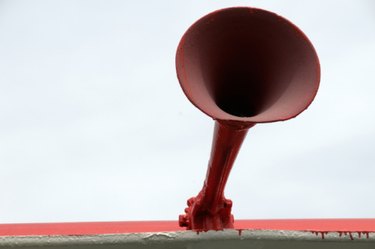
One of the factors determining the materials in a building design is traffic noise. Higher levels of noise demand better noise insulation in walls, doors and windows. The metric used to measure ambient noise is L10, which is defined as the 90th percentile of the distribution of noise measured over a given sample time period; that is, only 10 percent of the noise measurements taken during the sample period are higher than L10. L10 is measured in "dbA"--decibels weighted by the A filter, a perceptual filter that approximates the response of the human ear. You can calculate an estimate for the value of L10 at any site of your choice.
Step 1
Count the number of vehicles passing by the site during the interval for which L10 must be calculated. For example, to calculate L10(18 hr) count the number of vehicles during a given day, between 6 am and midnight. That is considered a representative 18-hour interval.
Video of the Day
Step 2
Adopt a decibel scale for your calculations by evaluating the following formula:
scaledQ = 10 x log(Q)
Replace "Q" by the vehicle count obtained in Step 1. "log()" denotes the logarithm in base 10.
Step 3
Apply a correction factor for the average amount of noise from a single vehicle, by evaluating the following formula:
L10 = 28.1 + scaledQ
The constant 28.1 in the formula above represents the 90th-percentile amount of noise attributed to a single vehicle in this method for estimating L10. Because L10 is computed in a logarithmic scale, adding 28.1 to the scaled vehicle count is equivalent to multiplying the non-scaled vehicle count by 28.1 in the original linear scale.
The result of this calculation is measured in dbA. It is a quite accurate estimation for the L10 parameter you need to design the building.
Video of the Day